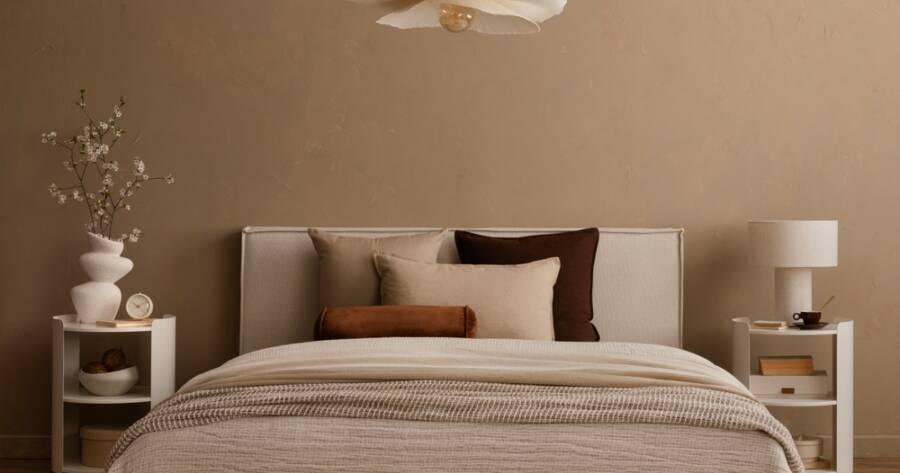Your bedroom should be more than a place to rest. It should be a retreat for renewal. The way your space looks, feels, and even smells influences how easily you fall asleep and how refreshed you wake up. Thoughtful design choices can transform a room from merely functional to deeply restorative. When your environment supports relaxation, your body follows, creating a nightly rhythm that nourishes both sleep and well-being.
The Role of Your Sleep Environment
Sleep quality doesn’t depend solely on your bedtime routine. Your surroundings play an equally powerful role. A cluttered or overstimulating bedroom can keep your mind alert, while a serene, well-balanced space signals your body to unwind. Think of your bedroom as a cocoon for rest — simple, soft, and intentionally arranged to invite calm.
The best sleep spaces use minimal visual distractions, gentle colors, and cozy textures. Try keeping your nightstand clear, tucking cords out of sight, and limiting electronics. When your space feels uncluttered, your thoughts follow suit. A peaceful environment allows your brain to associate the room with rest, not stress, screens, or unfinished tasks.
Choosing the Right Mattress and Bedding
A comfortable bed is the foundation of good sleep. Your mattress should support your body’s natural alignment, keeping your spine neutral and your muscles relaxed. The ideal choice depends on personal preference. Some find firm support grounding, while others prefer a softer, contouring feel. If your mattress is over eight years old, it might be time to replace it for optimal comfort and support.
Equally important are breathable sheets and pillows. Choose natural materials like cotton, bamboo, or linen to regulate temperature and wick away moisture. Lightweight, layered bedding allows for flexibility through the seasons. The goal is to create a bed that feels like a sanctuary, inviting, balanced, and effortlessly comfortable.
The Calming Effect of Color and Texture
Your bedroom’s color palette influences your emotional state. Soft neutrals, muted blues, and gentle greens promote relaxation and signal the brain that it’s time to rest. Avoid overly bright or stimulating tones, which can energize rather than soothe. The goal is to create a visual environment that feels like a deep breath.
Texture also matters. Plush rugs, smooth sheets, and soft throws add warmth and sensory comfort. Natural materials like wood and linen contribute to a grounded, organic feel. The right combination of color and texture turns your room into a haven, one that whispers rest instead of demanding attention.
Lighting That Supports Sleep Rhythms
Lighting can make or break your sleep environment. Bright, cool-toned light keeps your body in “day mode,” while warm, dim lighting encourages melatonin production. Replace harsh bulbs with soft, amber-toned ones, and use bedside lamps instead of ceiling lights in the evening.
Natural light during the day is just as important. Exposure to sunlight helps regulate your circadian rhythm, making it easier to fall asleep at night. Consider blackout curtains to block unwanted light when it’s time to rest, and open them each morning to greet the day. The rhythm of light reminds your body when to wake, when to rest, and when to simply be.
Sound, Scent, and Air Quality
Your senses are powerful allies in creating calm. Gentle white noise, a soothing playlist, or a quiet fan can mask disruptive sounds that disturb rest. Scent plays its part, too — lavender, chamomile, or sandalwood promote relaxation when diffused or misted lightly on linens.
Good air quality is essential for deep sleep. Open a window during the day to let in fresh air or use a small purifier to reduce allergens. Plants like peace lilies or snake plants can subtly improve oxygen flow while adding life to your room. When your senses are balanced, your body relaxes instinctively.
Declutter and Digitally Detox Before Bed
A clear space invites a clear mind. Avoid letting your bedroom double as an office or storage area. Keep surfaces simple, with only items that bring calm, such as a book, a lamp, or a candle. Visual order helps quiet mental chatter and signals your body that the day is ending.
Equally important is a digital detox. Try to stop using screens at least 30–60 minutes before bed. Blue light disrupts melatonin production and can keep your mind engaged long after you’ve closed your laptop. Replacing late-night scrolling with quiet rituals (like reading or journaling) helps your body settle naturally into rest.
Creating a Sanctuary for Restoration
Your bedroom is your most personal space. The one place designed entirely for rest, reflection, and renewal. Each design choice, from the softness of your sheets to the warmth of your lighting, teaches your body what peace feels like. When you treat your sleep environment as sacred, sleep becomes effortless rather than elusive. Over time, your room transforms into more than a place to close your eyes — it becomes a sanctuary that restores your energy, clarity, and calm every night.

